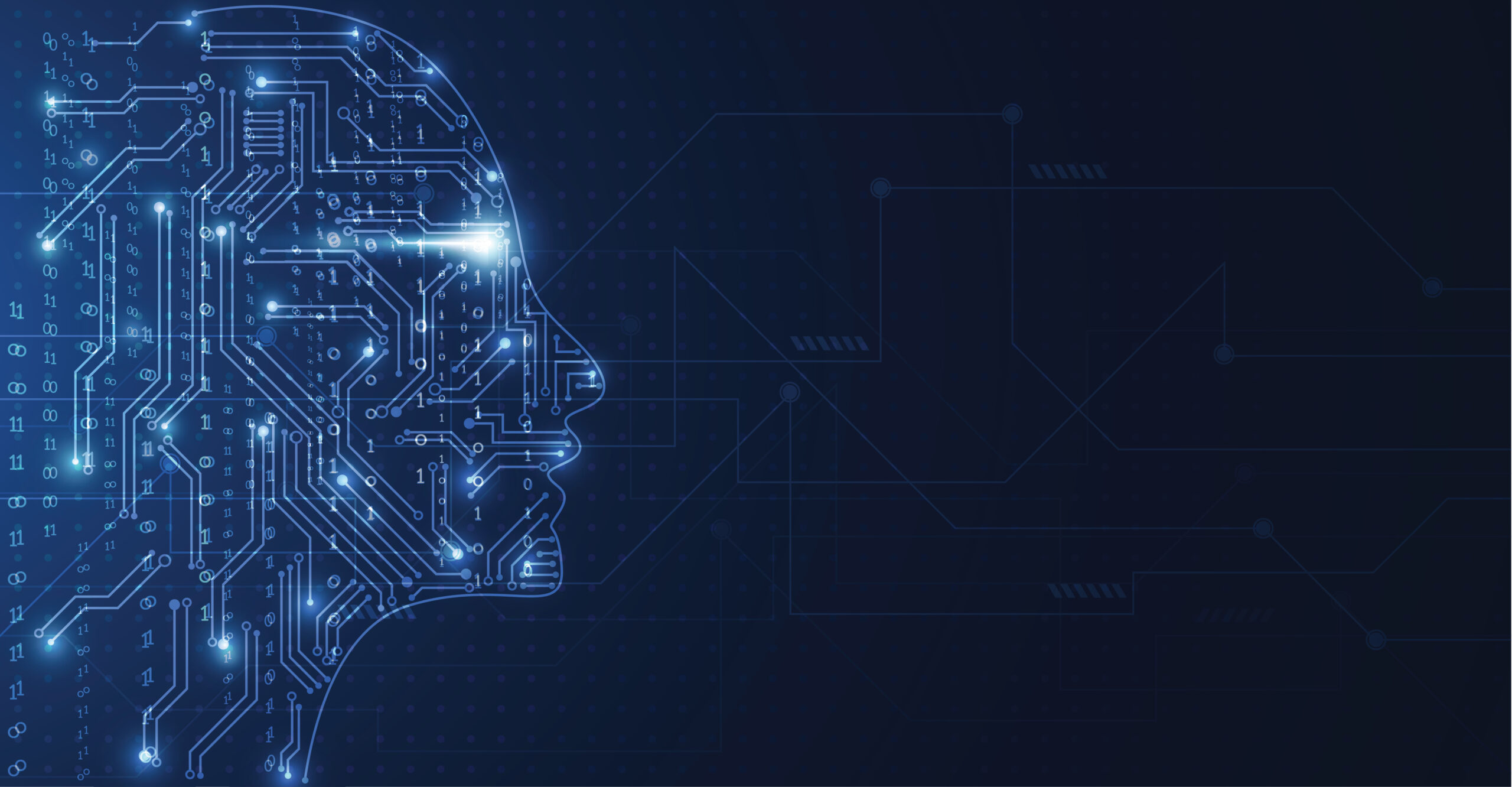
First, let’s start with a simple definition of Web 3.0. It is an updated form of the internet that aims to decentralize information and personalize the user experience. Next, this article will discuss how this update could impact the future, specifically the healthcare data landscape.
Web 2.0 vs. Web 3.0
There are several different iterations of the internet we all use regularly.
Let’s break them down.
The internet currently uses Web 2.0, created by Tim Berners-Lee. This technology was developed with a vision of a collaborative space where data could be shared openly with the ability to access various user-generated content anywhere in the world.
Web 2.0 allows anyone with a web browser to find information by utilizing HTML computer codes attached to data, documents, and images. These codes then enable users to access content through search engines.

The technology utilizes a centralized platform and prioritizes content based on keywords, paid advertisements, and popularity for ranking within search engines. Websites that wish to have a higher rank can invest money or utilize techniques such as Search Engine Optimization (SEO) to pop their information to the top of the list. However, data needs to be personalized according to the user.
Within Web 2.0, a person can search for a keyword and get an SEO-generated list of results rather than personalized content that is relevant on an individual level. However, there are growing data privacy issues and problems with information being held in silos. Because of this, people are looking for a more innovative solution where computers can interact with one another more fluidly.
Web 3.0 is the newly proposed version of the internet that would take a decentralized approach. It focuses on natural language processing through Artificial Intelligence (AI) and blockchain technology and seeks to improve 3D graphics.
Web 2.0 gives large entities the power to hold copious amounts of data. This data is not shared and is instead hoarded by big corporations. Many users don’t know what data has been collected or how to access it. Web 3.0 would shift to an open-source protocol and allow people to store information from their daily lives, such as internet browsing, healthcare, banking, nutrition, and more, in personal online data stores (or PODS.)
PODS would then be stored in blockchains, which are online ledgers that keep data in a way that makes it impossible for hackers to steal it. PODS would also make your data accessible anywhere in the world.
AI can then use PODS to provide better data and responses from user searches. AI can track how successful these searches are through algorithms using a process called machine learning. This approach will allow users to efficiently locate contextual content instantly rather than sift through hundreds of pages to find what they need.
Web 3.0 will utilize a Resource Description Framework (RDF) rather than HTML. HTML can describe the location and pull data, but RDF describes the data and can give it meaning using Web Ontology Language. SPARQL (the Standard Protocol and RDF Query Language) allows users to query all data and information mapped to RDF. This allows for information to be pulled based on the user’s wants, not on how the database is organized.
Unlike Web 2.0 technologies which can be manipulated, Web 3.0 is built to be used by software agents, and the process will be evident to users. The result is a semantic web that gives users personalized experiences and power over their data. They can then decide when/where they want to share.
Web 3.0 health takes this approach one step further and will allow a person’s health-related information and data to be more readily accessible. Better management of healthcare data will lead to better health outcomes, properly coordinated care plans, and increased quality of care.

Much like Web 2.0, the management of healthcare data remains a growing issue that directly impacts the quality of care for patients. Coordinating care between multiple hospitals, clinics, or healthcare providers can be incredibly frustrating for patients and providers.
The average adult has a primary care provider and at least one specialist. The number of specialists increases with age and the complexity of the disease, meaning the more complicated your health is to manage, the more complex and segmented your health data becomes.
In addition, if a patient seeks emergency care, none of their health data is automatically available to ER doctors if that information is outside their system. Emergency doctors are being asked to treat patients without knowing their entire health history, lowering the standard of care and putting patients at risk.
Patient data should be patient-centric and accessible to those to who the data belongs, regardless of the healthcare system or provider. A goal of Health 3.0 is to put patients in charge of their data using PODS (Personalized Online Data Stores) that can be held and shared at the patient’s will and accessed anywhere in the world.
To review, Web 3.0, or the semantic web, is the newly proposed version of the internet that developers hope will change and personalize the user experience. It’s characterized by AI (Artificial Intelligence) and utilizes PODS stored in blockchains and RDFs to pull accurate data using SPARQL queries. It also will allow users to search and access 3D imaging.
So let’s dig a little deeper into the differences. Four main components make Web 3.0 different from Web 1.0 and 2.0. They include:
1. Artificial Intelligence and Machine Learning

Machine learning is a form of AI that imitates how humans learn by utilizing data and algorithms from previous searches. Just as a person improves each time they complete a task, machine learning improves as they continue to use Web 3.0, and searches become more accurate and personalized.
Rather than producing search result pages of irrelevant information based on SEO queries, Web 3.0 continuously improves search relevance and accuracy.
2. Personalized Searches
In addition to machine learning, searches also consider personal demographics such as age, weight, disease, and location, all stored in PODS to deliver results based on a more specific query.
Web 3.0 will follow blockchain technology, which makes it incredibly secure and impossible to hack personal data. A blockchain is a ledger of transactions recorded in many places across an entire network, which means your demographics can be utilized anywhere in the world and still be secure.
3. Personalized Online Data Stores (PODS)
The information would be held within decentralized personal online data stores (PODS) where data from our daily lives can be stored. This includes personal data such as banking, credit card information, healthcare data, internet browsing, fitness tracking, music streaming, insurance information, etc.
This data could be shared through a link, but it will not be downloadable or savable by the receiver. For example, a patient could share all relevant medical information with a doctor and give them a complete medical history instantly without having to go back and forth between multiple providers of the past, which can be a daunting task.
4. 3D Imaging

Traditional browsers within Web 2.0 do not automatically support 3D imaging, which has become increasingly popular as VR (virtual reality) technologies continue to grow. There are ways to override the settings, but the outcome only sometimes leads to a fluid and seamless experience as it would if created for that purpose.
Web 3.0 will integrate 3D and AR/VR technology to create 3D visuals that will lead to a fully immersive experience. This technology will allow for significant growth and a more interactive and immersive online experience for many industries, such as health, gaming, real estate, and even fashion.
According to RBC Capital Markets, the healthcare industry generates almost a third (around 30%) of the world’s data. By 2025, the CAGR (Compound Annual Growth Rate) for healthcare will reach 36%, growing faster than industries like media and entertainment, financial services, and manufacturing.
Currently, patient data is held within healthcare systems using individualized software rather than by the patients, who should be the owners of their data. As a result, many don’t have access to their patient records or know what information their healthcare providers keep after each appointment. Placing people in charge of their data using Web 3.0 has many benefits, such as:
1. Increased Patient Engagement

Patients today are sometimes disconnected from their health status because they don’t have the tools to make informed decisions. Ongoing health and medical information is available online, and many don’t know what information is relevant or accurate.
In addition, data collected within the medical world is provider-centric rather than patient-centric, and many don’t know how to access their data or what information is in their medical records.
Giving the data back to patients empowers them to learn about ways to improve their health and allows them to be more involved in decision-making and collaboration with their doctors.
Additionally, through Web 3.0, patients would receive personalized insights from their data to improve their health, such as the best foods to eat, the most effective exercises, what medications and products could benefit them, and the latest trusted scientific articles.
2. Patients Can Monetize Their Data
In a Health 3.0 setting, patients own their data. They can decide what information to share, who they want to share it with, and if/when to delete it, and they can even earn money in the process.
Health 3.0 uses the idea of “token economics,” or tokenomics, the process or cycle of a token and how it is acquired and used for trade within the crypto market. These processes secure a crypto project’s long-term success, like our everyday economy.
For example, companies like JennyCo will reward (or ‘trade’ cryptocurrency) patients for uploading their health data. That data can be de-identified and used for many different purposes, and patients can continue to earn money by leasing their data in an anonymous form that protects their identity.
3. Increased Data Security
Healthcare data companies have been the target of attacks for many years because they hold such valuable information that is not stored in a de-identified format. Fortified Health Security released a mid-year report in July of 2022 stating that there had been 337 data breaches that impacted more than 500 individuals within the first half of 2022. Although this was less than the previous year, many people were still affected.
Though healthcare systems work hard to enhance safety measures, ensuring complete security with so much information in one place is difficult, primarily when it is generally held in the cloud or within servers.
Web 3.0 would encrypt each person’s data to ensure it is kept safe. In addition, if a patient does choose to lease their data, it is anonymized before it is pooled to protect the privacy of each individual.
4. Better Collaboration Between Providers
Allowing patients to have all their data readily available ensures that pertinent medical information is available to each doctor they receive care from, no matter where they are located.
According to The Joint Commission, 80% of medical errors are due to communication gaps, often resulting from a handoff without proper information exchange.
The number of handoffs that happen during a hospital stay is extensive. There is much room for error between primary care providers, ER doctors, hospital staff, and discharge.
Better collaboration between each healthcare provider will improve the quality of care, reduce medical and medication errors and improve healthcare outcomes.
5. More Accurate Research

Missing, incomplete, or inaccurate data is a significant issue in healthcare research. If researchers are unaware of the medical background, proper controls can’t be implemented to allow for valid study results. For example, if a study is testing medication and is unaware of everything the patient is currently taking, it can skew the results for that patient and put the entire study at risk.
Health 3.0 would allow research personnel to get the complete medical history of all their study participants to generate the most accurate study results, which could improve the healthcare industry.
In addition, if most of the population participated in data leasing, low-cost population studies could be conducted that could track diseases and prioritize future research to meet more needs.
The first pilot of a decentralized web is the data bridge XFORM, created by Janeiro Digital. In collaboration with the NHS in Greater Manchester, they created data pods that contained complete medical records that followed patients to each appointment. These data pods were accessible by healthcare professionals to give them full knowledge of medical information to treat patients within the pilot study.
This method improved the healthcare outcomes of the participants. It was especially beneficial for those with complex medical issues with nuance, such as diabetes, that make entire medical and medication history essential to proper treatment.
This pilot also displayed reduced administrative burden for front office workers, who were not scrambling to provide complete records from various health systems. It was all in one easy-to-access location.
Finally, costs were reduced because providers weren’t running the same tests multiple times or trying medical treatments that had previously failed. They had a complete record that allowed providers to order only the most effective therapies previously noted or try new ones that had not been called.
Web 3.0 and digital health are our future!
- A semantic web and PODS will revolutionize how we interact with the internet and the information available.
- Healthcare data owned by patients will improve healthcare costs and quality of care.
- Tokenomics will incentivize individuals to share their data and can improve the health of populations worldwide.
- Patient engagement will allow patients to take charge of their health issues and help healthcare services allocate the best care appropriately.
Health 3.0 needs innovators to support these valuable projects and be a part of the solution. Companies like JennyCo are already preparing for the future! Learn more about how you can participate in the Healthcare Data Marketplace with JennyCo.
